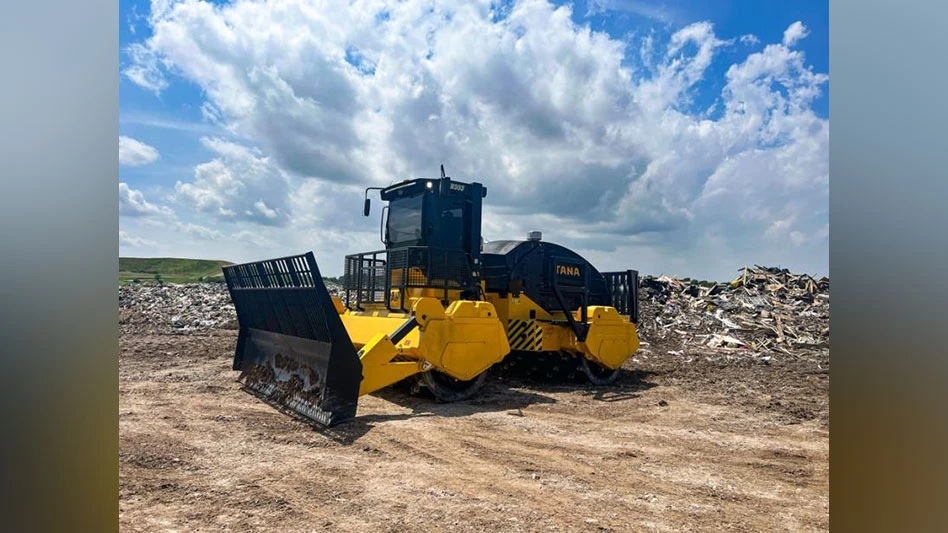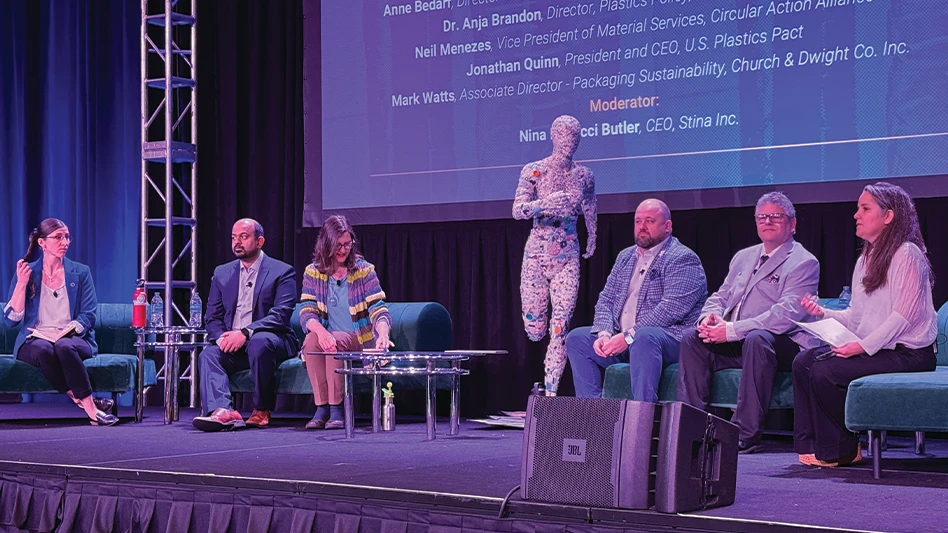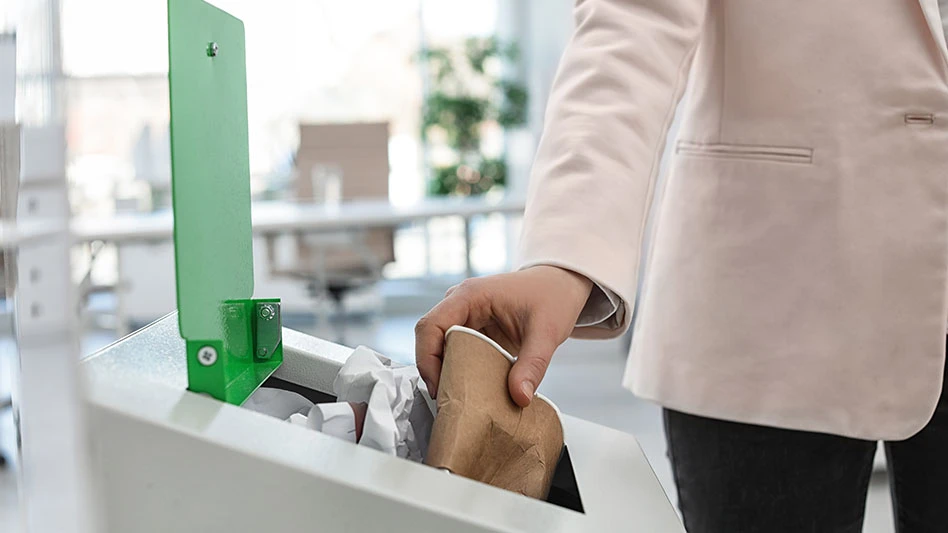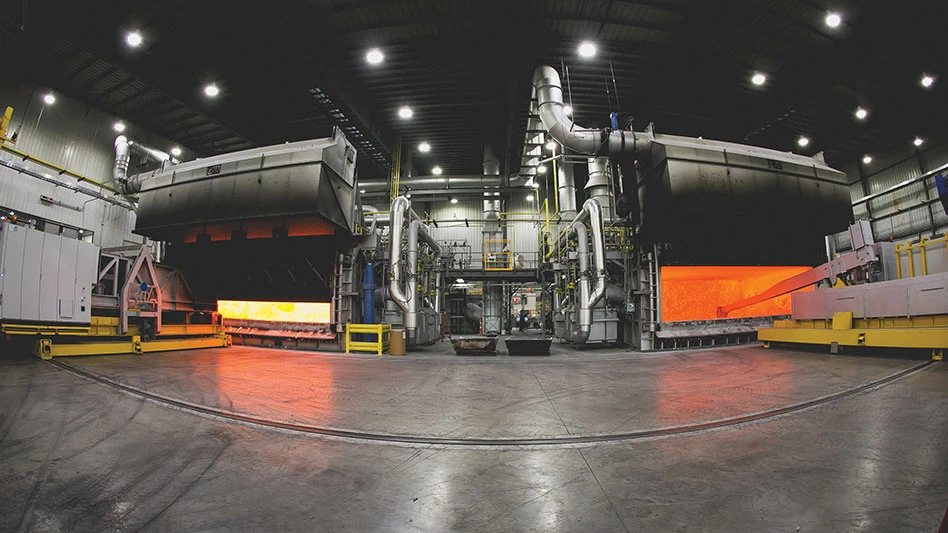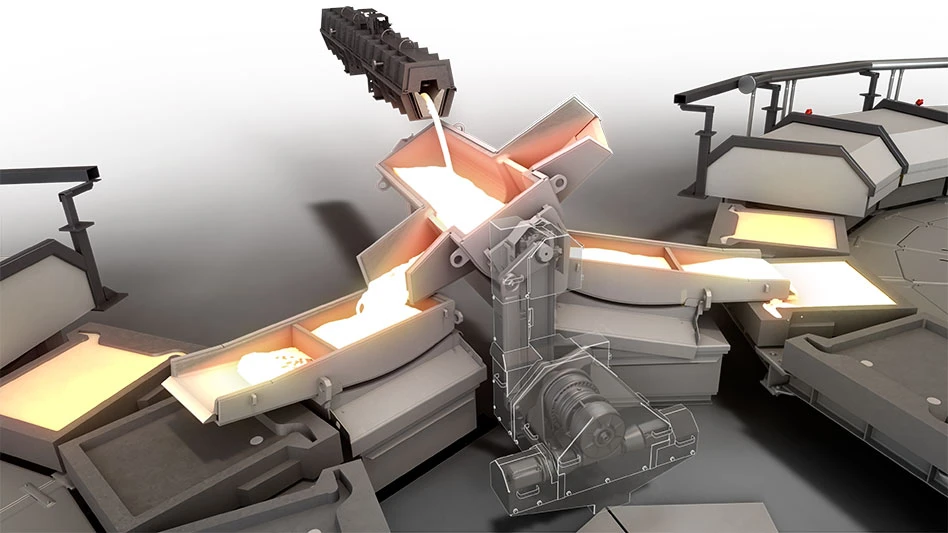
Green Bay Packaging
After two-and-a-half years of planning and construction, Green Bay Packaging (GBP), Green Bay, Wisconsin, officially began operations at its new paper mill in March. The new mill, which produces containerboard and consumes old corrugated containers (OCC) and mixed paper as feedstock, is located at the mouth of the Fox River. The company says its $500 million investment to update the 70-plus-year-old mill has had “a profound, positive impact on northeast Wisconsin’s economy and the environment.”
The new mill replaces an older production technology that GBP built in the city in the late 1940s. Matt Szymanski, vice president of mill operations at GBP, says the company began discussing replacing that older machine in 2016.
“It was an older mill, and we saw the need for additional capacity for us to supply our converting operations,” he says. “The width of the [old] machine was not really in line with modern corrugator widths of 98-132 inches, so that was a motivating factor. The fact is, we wanted to take a major step in quality. Having new papermaking technology has gotten us there.”
Szymanski continues, “For us to stay competitive, the decision was made to build the new mill here.”
A high-tech, versatile mill
The new Green Bay mill can produce about 685,000 tons per year of containerboard, which is “well over double” what its predecessor mill could produce, Szymanski says.
“We’re capable of making linerboard and corrugated medium on one machine. We have the flexibility to make either grade,” he says.
Szymanski adds that the old line and the new line operated simultaneously for a time, but the company officially stopped operating the old equipment June 1.
Voith Paper, a division of Germany-based Voith GmbH & Co. KGaA, was the original equipment manufacturer for the mill’s recycled fiber plant and paper machine. The paper machine itself is automated and can produce a high-quality sheet. Szymanski says the mill has a “very robust” recycled fiber plant that allows it to run high volumes or percentages of mixed paper.
“That recycled fiber line is well-designed to handle higher contaminant loads associated with mixed paper—even material recovery facility (MRF) OCC tons, frankly,” he says. “We didn’t have the capability of running a significant amount of mixed in the old mill. We believe in having as much flexibility as we can in our operations—we built in flexibility for raw material supply.”
Overall, the Green Bay mill can run as much as 60 percent mixed paper furnish combined with 40 percent OCC. “It could also do 100 percent OCC. The plant is very versatile,” Szymanski says.
He adds that GBP is sourcing its recovered fiber furnish mostly from suppliers in the Midwest.
Unique startup with unique processes
The COVID-19 pandemic presented some unique challenges for GBP as it worked to open the mill. While getting new equipment to the site was not an issue, Szymanski says it was tougher to get Voith staff on-site to assist with startup and commissioning in light of travel restrictions. Additionally, he says, it was challenging to ensure employees were socially distanced for their health and safety while performing tasks.
Despite the challenges, Szymanski says, the company was able to get those workers to its site, ensure worker health and safety through pandemic protocols and still achieve its target dates.
“We hit our schedule, even in light of the pandemic,” he says. “It’s a testament to the equipment suppliers living up to their commitment and the construction team and workers who came in to get work done.”
Another unique feature of the Green Bay mill is its anaerobic digester. The old mill featured a closed-loop water system that did not discharge any process water into the river. Szymanski says the new mill has an effluent treatment plant (ETP) that pretreats the mill’s process water prior to bringing it back into the mill or discharging it into the publicly owned sewage treatment works. The digester within the plant contains anaerobic bacteria that consumes organic matter, such as starch. A clarifier within the ETP is used to remove solids. The byproduct from the bacteria’s starch consumption is methane gas, which is used as fuel for the mill’s boilers, which generate steam used in the papermaking process.
“We treat our process [water] and can return water back to the mill or send it to our local municipal wastewater treatment facility,” Szymanski says. “We built a partnership with NEW Water (the water resource utility serving northeast Wisconsin) to pull water back to the mill. We are the first in the country to work with a municipal wastewater treatment facility to achieve this novel water conservation program. We’re seeing expansive water quality benefits in our process and reducing the amount of solids and phosphorus that go into the Fox River—it’s a tremendous environmental win.”
Preparing for growth
GBP is optimistic about the future of its Green Bay mill. “The goal for the new mill is to optimize the new facility to increase the slope of our startup curve,” Szymanski says. “We will also start to build flexible fiber recipes using mixed paper and OCC.”
He adds that the company is confident in its ability to grow because of its customer service capabilities.
“We’re viewed as a top-tier supplier, focused on quality and service,” Szymanski says.
Another opportunity for the company is the growing demand for packaging worldwide. According to Boston-based Fastmarkets RISI, first-quarter U.S. actual shipments of boxes increased 3.9 percent year over year and are expected to advance by 7 percent in the second quarter, following 6.7 percent year-over-year growth in the fourth quarter of 2020.
“There was increased demand for packaging as a whole, especially during the pandemic and post-pandemic,” Szymanski says. “Going into the pandemic, we did not anticipate the significant increase in demand that we have experienced. There’s good room for economic growth, and that should further fuel demand. We have to be aware that there are economic cycles, and those [cycles] can have an impact on [the] packaging business—and business in general. But we do feel that there is a sufficient level of demand here that is sustainable due to growth in e-commerce.”
GBP is a family-owned, vertically integrated manufacturing company consisting of corrugated shipping container plants, a folding carton facility, recycled and virgin containerboard mills, pressure-sensitive label roll-stock plants, timberlands, a paper slitting operation, specialty converting operations and a sawmill facility. The company operates a total of two paper mills in the U.S.
Latest from Recycling Today
- Unifi launches Repreve with Ciclo technology
- Fenix Parts acquires Assured Auto Parts
- PTR appoints new VP of independent hauler sales
- Updated: Grede to close Alabama foundry
- Leadpoint VP of recycling retires
- Study looks at potential impact of chemical recycling on global plastic pollution
- Foreign Pollution Fee Act addresses unfair trade practices of nonmarket economies
- GFL opens new MRF in Edmonton, Alberta

